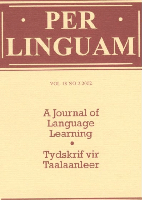
Per Linguam-A Journal of Language Learning
Scope & Guideline
Empowering Language Learning Through Innovative Research
Introduction
Aims and Scopes
- Language Acquisition and Pedagogy:
The journal explores methodologies and strategies for effective language learning and teaching, often focusing on the interplay between first and second languages and their impact on learners' educational experiences. - Multilingualism in Education:
It addresses the complexities of multilingual education, particularly in African contexts, emphasizing the challenges and opportunities associated with teaching multiple languages in diverse classrooms. - Cultural and Contextual Factors:
Research often considers the cultural and social contexts of language learning, examining how local realities influence educational practices and learner experiences. - Innovative Teaching Strategies:
The journal highlights innovative approaches to language instruction, including the use of technology, games, and translanguaging, to engage learners and enhance comprehension. - Assessment and Evaluation:
There is a consistent focus on assessment strategies, evaluating learners' language skills, and developing tools that reflect the realities of language use in educational settings.
Trending and Emerging
- Translanguaging Practices:
The concept of translanguaging is increasingly being recognized as an effective pedagogical strategy that allows learners to leverage their linguistic resources across languages, promoting deeper understanding and engagement. - Technology Integration in Language Learning:
The use of technology, including mobile learning and digital communication tools (such as WhatsApp), is trending, indicating a shift towards incorporating modern technologies to enhance language instruction and learner interaction. - Inclusive Language Teaching:
There is a growing focus on inclusive practices in language teaching that address diverse learner needs, particularly in relation to special educational needs and the experiences of marginalized groups. - Culturally Relevant Pedagogy:
Research is increasingly emphasizing culturally relevant teaching practices that acknowledge and integrate students' cultural backgrounds into language education, promoting a more holistic learning experience. - Collaborative Learning Environments:
Emerging themes include the importance of collaborative learning and peer interaction in language acquisition, recognizing the benefits of social learning in diverse classroom settings.
Declining or Waning
- Traditional Language Instruction Methods:
There appears to be a diminishing emphasis on conventional methods of language instruction, such as rote learning and grammar-focused approaches, as newer, more interactive and student-centered methodologies gain traction. - Focus on Language Death and Preservation:
Previously, discussions surrounding language death and preservation were more prominent. However, recent publications indicate a shift towards more practical applications of language learning rather than theoretical explorations of language extinction. - Language Policy Analysis:
The analysis of language policies in educational institutions has seen a decrease, with more research now focusing on classroom practices and teacher experiences rather than broader policy implications. - Single-Language Pedagogy:
There is a noticeable reduction in studies focusing exclusively on single-language instruction, as the journal increasingly embraces multilingual approaches that reflect the realities of language use in contemporary classrooms.
Similar Journals
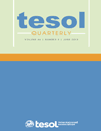
TESOL QUARTERLY
Elevating Pedagogy through Critical Analysis and PracticeTESOL Quarterly, published by Wiley, is a premier academic journal in the fields of Education and Linguistics, noted for its significant contributions to the study of Teaching English to Speakers of Other Languages. Since its inception in 1981, this journal has established itself as a vital platform for researchers and educators, emphasizing empirical studies, innovative teaching practices, and critical reviews that inform policy and pedagogy. With an impressive impact factor, it consistently ranks in the Q1 Quartile across multiple categories in both Education and Linguistics, highlighting its influence and reach within the scholarly community. The journal boasts strong Scopus rankings, placing it in the top 96th percentile among related publications, further affirming its essential role in disseminating cutting-edge research. Although it does not offer open access, TESOL Quarterly remains dedicated to promoting high-quality scholarship that advances the understanding of language education practices globally.

RELC Journal
Leading the Way in Linguistic and Educational ExcellenceRELC Journal, published by SAGE Publications Ltd, stands as a leading platform in the fields of Education and Linguistics, boasting an impressive Q1 ranking in both categories according to the latest metrics. Established in 1970 and continuing its commitment to academic excellence through 2024, the journal features rigorous peer-reviewed research that explores the intersections of language, culture, and pedagogy. With a notable Scopus ranking that places it in the 98th percentile for both Language and Linguistics (Rank #16/1088) and Education (Rank #91/1543), the RELC Journal is essential for scholars, educators, and practitioners seeking to contribute to and stay abreast of cutting-edge developments in their respective fields. Although currently not open access, the journal remains accessible to a diverse audience and invites contributions that challenge conventional perspectives and inspire innovative practices in language education.

RAEL-Revista Electronica de Linguistica Aplicada
Fostering Dialogue Between Language and SocietyRAEL-Revista Electronica de Linguistica Aplicada, published by the ASOC ESPANOLA LINGUISTICA APLICADA-AESLA, is a prominent open access journal that has been serving the field of applied linguistics since its inception in 2002. With a dedicated focus on the interplay between language and its practical applications in various contexts, the journal aims to disseminate high-quality research and foster academic discourse among linguists, educators, and policy makers alike. Based in Spain at the Universidad Politécnica de Valencia, RAEL is indexed in Scopus and offers access to a global readership. With a current impact factor reflecting its esteem in the fields of Education, Linguistics, and Social Sciences, the journal ranks in Q3 for linguistics and has achieved significant positioning within its categories. Researchers and students seeking to explore applied linguistic phenomena will find valuable insights and diverse perspectives in its published articles, making RAEL a vital resource in the pursuit of knowledge advancement in this dynamic discipline.
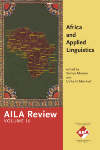
AILA Review
Unveiling insights into language acquisition and application.AILA Review, published by John Benjamins Publishing Co, stands as a pivotal resource within the field of linguistics and language studies. With an ISSN of 1461-0213 and an E-ISSN of 1570-5595, this journal is dedicated to fostering innovative research and scholarship that advances the understanding of language in its diverse forms and applications. Spanning significant years from 2003 to 2016 and 2018 to 2024, AILA Review has established itself with a commendable reputation, reflected by its Q2 ranking in Linguistics and Language and notable Scopus rankings, positioning it in the 73rd percentile among Arts and Humanities. As an essential forum for researchers, professionals, and students alike, the journal invites high-quality contributions that engage with theoretical and practical aspects of language acquisition, multilingualism, and applied linguistics, enhancing discourse in these vital areas of study. Although not an open-access journal, its commitment to quality ensures that publications are widely recognized and cited, fostering impactful scholarly exchanges.

Journal of Second Language Studies
Navigating the Dynamics of Language EducationWelcome to the Journal of Second Language Studies, a premier publication dedicated to advancing the field of language acquisition and pedagogy. Published by John Benjamins Publishing Co in the Netherlands, this journal (ISSN: 2542-3835, E-ISSN: 2542-3843) holds a significant place within the academic community, reflected by its Q2 ranking in Education and Q1 in Linguistics and Language for 2023. With a strong Scopus presence, ranking 197/1088 in Language and Linguistics, it appeals to a broad audience of researchers, educators, and students interested in the complexities of second language learning. The journal has been publishing groundbreaking research from 2018 to 2024, focusing on innovative methodologies, theoretical frameworks, and practical applications that enhance second language education. Although currently not open access, this journal serves as an essential resource for those seeking to deepen their understanding of language dynamics and teaching strategies in a diverse educational landscape.
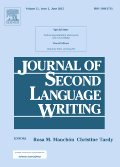
JOURNAL OF SECOND LANGUAGE WRITING
Innovating Approaches to Language Learning and TeachingJOURNAL OF SECOND LANGUAGE WRITING, an esteemed publication of PERGAMON-ELSEVIER SCIENCE LTD, serves as a pivotal resource in the fields of Education and Linguistics, exhibiting a remarkable impact factor that solidifies its standing in the academic community. Established in 1992, this journal has consistently provided a platform for high-quality research and discourse, with its articles rigorously peer-reviewed to ensure scholarly integrity. Holding Q1 rankings in both Education and Linguistics for 2023, it is recognized for its influence in shaping the field of second language acquisition and pedagogy. With impressive Scopus rankings that place it in the 98th percentile among peers, the journal attracts a diverse readership comprising researchers, educators, and students eager to explore the intricacies of second language writing. Its focus encompasses theoretical research, practical applications, and innovative methodologies that enrich the field, making it an essential resource for those dedicated to understanding and enhancing the writing skills of second language learners.

Unterrichtspraxis-Teaching German
Exploring New Horizons in German Language MethodologiesUnterrichtspraxis-Teaching German is a prominent academic journal published by WILEY, dedicated to advancing the field of German language teaching and pedagogy. With its ISSN 0042-062X and E-ISSN 1756-1221, this journal serves as a vital resource for educators, researchers, and students working to improve methodologies and outcomes in the teaching of German. Although it does not currently offer Open Access options, [[the journal remains committed to high-quality scholarly contributions that foster innovative practices and theoretical advancements in language education. Based in Hoboken, NJ, the journal has established a reputation for its rigorous peer-review process and relevance across multilingual education contexts. In a world where language skills are increasingly important, Unterrichtspraxis-Teaching German plays a crucial role in promoting effective teaching strategies and contributing to the broader discourse surrounding language acquisition and pedagogy.
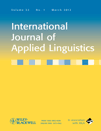
International Journal of Applied Linguistics
Exploring Real-World Applications of LinguisticsInternational Journal of Applied Linguistics, published by WILEY, is a premier platform for cutting-edge research in the field of applied linguistics. With a notable Impact Factor and ranked in the top Q1 quartile of linguistics and language, this journal serves as an essential resource for scholars, practitioners, and students. The journal’s wide-ranging scope includes various subfields such as language acquisition, language education, sociolinguistics, and discourse analysis, fostering multidisciplinary approaches to language studies. It has achieved a significant Scopus Rank, placing it in the 90th percentile for both Arts and Humanities as well as Social Sciences categories, reflecting its high visibility and influence in the academic community. The International Journal of Applied Linguistics is committed to advancing the understanding of language use in real-world contexts through rigorously peer-reviewed articles that contribute to both theory and practical applications. While it is not an open-access journal, it remains a highly respected publication for researchers looking to disseminate and acquire knowledge in applied linguistics.
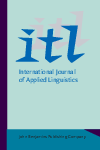
ITL-International Journal of Applied Linguistics
Fostering impactful research in linguistics and language acquisition.ITL-International Journal of Applied Linguistics, published by JOHN BENJAMINS PUBLISHING CO in Belgium, stands as a leading journal in the field of applied linguistics and education, recognized for its rigorous scholarship and impactful contributions. With an impressive ranking of Q1 in both the Education and Linguistics and Language categories, ITL holds its place among the top journals globally, featuring in the Scopus rankings with a notable 91st percentile in both Arts and Humanities as well as Social Sciences. The journal aims to disseminate innovative research exploring the intersection of linguistics, language acquisition, and pedagogical practices, fostering a rich academic dialogue among researchers, educators, and practitioners. Though not currently an open access journal, ITL remains accessible to a broad readership, with an emphasis on high-quality, peer-reviewed articles that inform and inspire advancements in applied linguistics. The journal's commitment to academic excellence and relevance makes it an essential resource for those seeking to understand and contribute to the dynamic landscape of language studies.
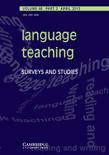
Language Teaching
Connecting researchers and practitioners in language teaching excellence.Language Teaching, published by Cambridge University Press, is a premier peer-reviewed journal that has been at the forefront of the linguistics and language education field since its inception in 1969. With an impressive impact factor positioning it in the top tier (Q1) of its category, this journal is ranked 22nd among 1,088 in the Arts and Humanities field and maintains an outstanding 98th percentile ranking. Focusing on innovative research and methodologies in language teaching and learning, Language Teaching provides a vital platform for discussing the latest developments in pedagogy, applied linguistics, and curriculum design. Although it does not offer open access options, it reaches a broad audience of researchers, educators, and practitioners dedicated to enhancing language instruction across various contexts. The journal continues to evolve, with plans to cover emerging trends and challenges in language education until 2024, making it an essential resource for anyone invested in the teaching of languages.